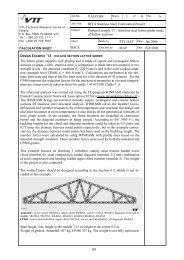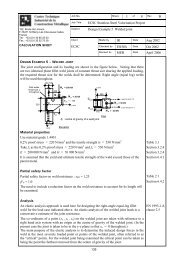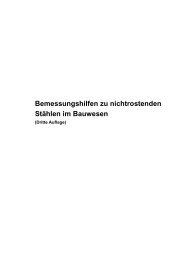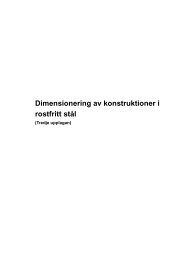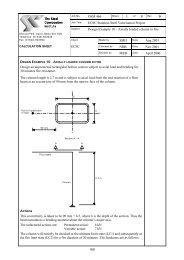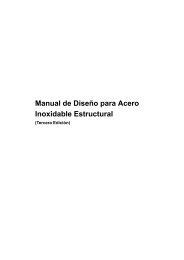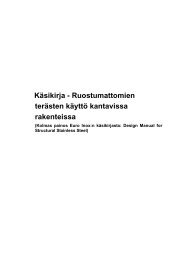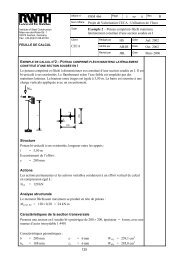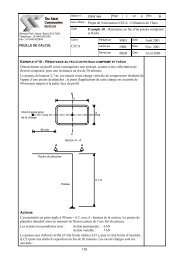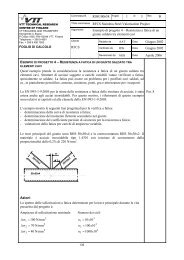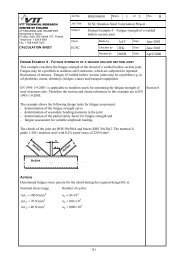STAINLESS STEEL IN FIRE (SSIF) - Steel-stainless.org
STAINLESS STEEL IN FIRE (SSIF) - Steel-stainless.org
STAINLESS STEEL IN FIRE (SSIF) - Steel-stainless.org
You also want an ePaper? Increase the reach of your titles
YUMPU automatically turns print PDFs into web optimized ePapers that Google loves.
5.3.2 Parametric studiesA parametric study was performed to investigate the behaviour of thin walled <strong>stainless</strong> steel boxcolumns. The applied load levels, as well as the global and local slenderness were varied and theresults were compared to the predicted strengths according to the EN 1993-1-2 design model. Toinvestigate a possible practical application of Class 4 <strong>stainless</strong> steel columns, the parametric study wasextended to include the length L=3.1 m for all cross-sections and load levels.The validated FE-model was used for the parametric study. However, due to the greater slendernessessimulated than in the experiments, the global imperfections had to be taken into account. The localimperfections were taken as b/200 and the global imperfection were taken as L/1000 in accordance withthe allowed tolerances in prEN1090-2 [16] . With nominal material properties (including the cornerproperties) and cross-sectional dimensions, the failure loads from the FE-simulations at roomtemperature were compared to the ultimate loads calculated in accordance with EN 1993-1-4 and goodagreement was obtained.The end constraints were pinned for all columns, both at ambient temperature and at elevatedtemperature. It was assumed that the temperature distribution was uniform across and along thecolumn. The failure loads from the FE-simulations at ambient temperature were used to calculate theappropriate loads for each load level, cross-section and slenderness used in the simulations at elevatedtemperatures.The results from the parametric study were compared to the design model in EN 1993-1-2 in Table 5.7.Table 5.7 Results from FE compared to predicted failure loads according to EN 1993-1-2(Load level = 30% of ultimate load at the ambient temperature)Cross-sectionFailure loadFailure loadFEEN1993−1−2λ = 1.2λ = 0.5λ = 0.8200x200x4 0.76 0.74 0.73200x200x5 0.81 0.82 0.79300x300x5 0.71 0.69 0.67It is clear that the design model according to the EN 1993-1-2 predicts the failure load at elevatedtemperature with varying results depending on the cross-section slenderness. Greater local slendernessleads to more conservative results. This is a result of the Eurocode method neglecting the morefavourable relationship between strength and stiffness at elevated temperatures for local buckling.The time to failure of columns of length 3.1 m were studied assuming exposure to the standard firecurve. The indication is that it is possible for unprotected <strong>stainless</strong> steel columns of this length toachieve a fire resistance Class R30.Table 5.8Predicted failure temperature and time(Load level = 30% of ultimate load at the ambient temperature)Cross-section Failure temperature °C Failure time (mins)200x200x4 810 28.1200x200x5 790 27.0300x300x5 816 30.546




